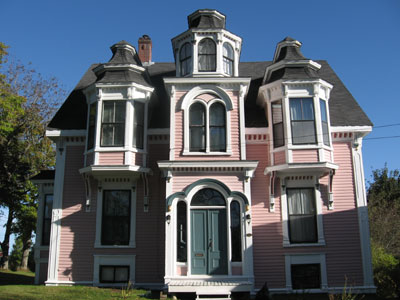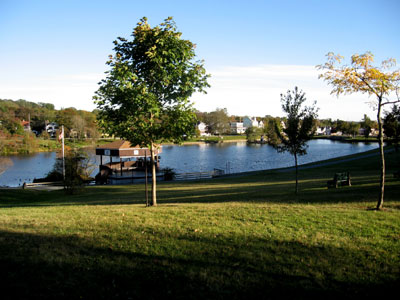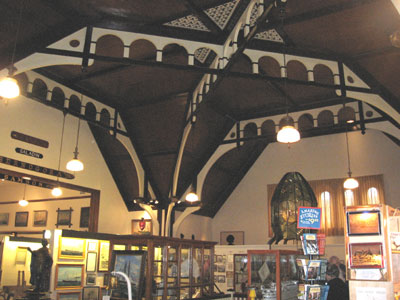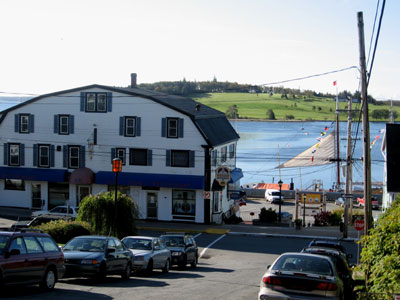A delightful rest at the Lunenburg Inn after a very compressed and hectic day along the Lighthouse Trail yesterday got me ready for another day of adventures. At about 7:30 I made my downstairs in anticipation of a filling breakfast. Sure enough, a freshly baked morning glory muffin was served to quench my immediate hunger. I had two breakfasts to choose from: a hot breakfast featuring poached eggs with bacon or turkey bacon, or a cold breakfast featuring a choice of two items of either cereal with fruit / fat-free yoghurt / fresh toast with jam or stewed rhubarb. I opted for the cereal with fresh fruit and the stewed rhubarb which was delicious. The breakfast at the Lunenburg Inn was so generous I wasn’t even able to finish my entire portion. Appropriately strengthened I was now ready for a full day of discoveries.

Maritime life in Lunenburg
At about 8:30 I made my way on foot into the town of Lunenburg, an extremely charming and scenic settlement that is home to about 2500 full-time residents and many thousands more during tourist season. Lunenburg is one of Nova Scotia’s favourite travel destinations, and for good reason. In 1995, Lunenburg was designated a UNESCO World Heritage Site in recognition of its unique architecture and civic design as it represents one of the best preserved examples of a planned British colonial settlement in North America.

Restaurants along Bluenose Drive, Lunenburg’s waterfront
The town was founded in 1753 and earlier inhabitants included the Mi’kmaq Natives as well as Acadian settlers. Lunenburg was named in honour of the Duke of Braunschweig-Lunenburg who had become the King of England in 1727. The settlers brought in by the British Crown were known as the foreign protestants, mostly farmers who had been recruited from areas in the southern and central parts of Germany, Switzerland and France. They were deliberately chosen for their potential loyalty to the British Crown. Over the years this farming community turned into a successful seaport and shipbuilding centre, and even today High Liner Foods still has a fish processing plan in town.

A look at the town from the waterfront
I strolled down to the waterfront on Bluenose Drive on a brilliant early fall morning, with not a cloud in the sky. Several restaurants and inns line the street on the north side, and the Fisheries Museum of the Atlantic which houses the popular Old Fish Factory restaurant is located on the south side of the street. The little town stretches up from the water on a fairly steep hill with long streets running east west, and shorter streets connecting straight up to the crest of the hill.

Beautiful architecture in Lunenburg
This was a quiet Friday morning, and the locals and tourists alike were still lying low. As I strolled up the hill I started to see shop-owners who were opening their doors and putting out their merchandise for sale. Lunenburg has a myriad of antique stores, small galleries and craft stores, and most of the houses are in excellent repair and colourfully painted.

The “Paddywagon” for the Old Lunenburg Jail
The town presents a very unified image of clapboard covered homes, and the historic local architecture includes a charming range of styles including the Cape Cod Style, Neo-Classical or Georgian homes, a Scottish style which includes five-sided Scottish dormers, Gothic Revival, Second Empire and Queen Ann Revival styles. A typical feature of Lunenburg architecture is the “Lunenburg Bump” which features a projecting Scottish dormer, also referred to as the bump.

An example of a Lunenburg Bump




